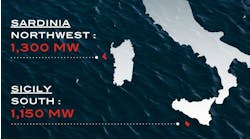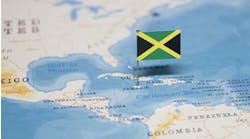Rick Von Flatern
Houston
Conoco expects delivery of the 721-ft DP drillship in September 1998. Originally outfitted to drill in 7,500-ft waters, it can be upgraded to 10,000-ft waters with only minor alterations.
More behind Conoco/R&B deal than announced?
The Conoco/Reading & Bates five-year, $400-million joint venture to explore Conoco's ultradeep water holdings in the Gulf of Mexico has interesting implications. The JV has commissioned construction of a $200 million DP drillship and signed a contract to drill 20 wells, at $20 million each, in 2,000-10,000 ft water depths.
The immediate response from a US industry still recovering from over 10 years of depression is predictable and unabashed approval. But, is a JV tossing those dollars at properties without so much as a 2-D seismic survey, much less 3-D or offset data, leading the industry through the next water-depth barrier or just grandstanding for shareholders?
CEO Archie Dunham says Conoco based this sizable financial commitment on prior possession of a handful of expensive leases in ultradeep water and a commitment to double their own value during the next eight years. What he didn't mention was the unmistakable ingredient - wildcatter.
Something familiar harkens back to a time when money and oil were synonymous, and operators and their bankers believed the price of oil would never stop rising. This was just before everything unraveled, sending an unprepared and overconfident oil industry into an extended depression. For the next ten years, a chastised industry promised the business gods that if they got one more boom they would not waste it (or words to that effect).
Now rig, labor, and equipment demand are all outstripping supply - certain boom indicators - in part due to the belief that a great deal of oil lies beyond the continental shelf. If Conoco does indeed find these elephants, their plunge into the icy depths will make them bold and daring explorers. If they come up dry, they will appear only rash.
Optimists do not see a correlation to past indiscretions. Smart operators like Dunham and his Reading & Bates counterpart, Paul Loyd, Jr., both remember those bad days as well as anyone, they argue. And, more importantly, they must know more than they have let on to the media about how much and what sort of hydrocarbon are to be expected from their endeavors.
Let us hope the optimists are right. Everyone knows what happens to those who forget history.
Gulf rig day rates continue climbing
Contract renewal day rates for independent-leg jackups capable of drilling in 300-ft water depths in the US Gulf of Mexico have swung through the $42,000/day barrier and could hit $45,000/day by the beginning of 1997. Such rigs were earning on $20,000-25,000/day in late 1995. The gain in day rate pay over the past year in the US Gulf was surpassed only by West Africa. US Gulf day rates remain behind most other areas of the world because most of the world's surplus jackups are stacked in Louisiana and Texas.
US Gulf day rates for both jackups and semisubmersibles are about 51% of that needed to construct a new unit with one or more short-term contracts, according to calculations made by drilling contractor Global Marine (SCORE report). One year ago, that day rate was a low 14% of that needed for new construction. The global rate for both types of rigs is presently about 58%.
What is interesting is that jackups are finally beginning to catch up with semisubmersibles in terms of day rates needed for new construction. Semisubmersibles, especially deepwater units, captured most of the early day rate gain in the US Gulf, but new activity on subsalt and continuing work on older leases following application of 3D seismic has invigorated the jackup drilling market.
Recent plans for new large deepwater drilling units by Transocean (drillship), Global Marine (drillship), Falcon (drillship), McDermott (spar), and Reading & Bates (drillship), in addition to the 8-10 semisubmersibles being upgraded to the next higher class, are indicative of the confidence with which contractors view day rate motion.
In fact, Noble Drilling is planning to convert the firm's eight submersibles to semisubmersibles with deepwater capability. This will mean adding substantially larger lower hulls and dynamic positioning for 3,000-10,000 ft water depth capability. The cost of the conversion is estimated at $560-720 million. Again, day rates are the convincer. Submersibles earn $25,000/day, when they are working. Deepwater semisubmersibles, which are in demand, earn $120,000/day.
Discoveries/appraisals:
Copyright 1996 Offshore. All Rights Reserved.




